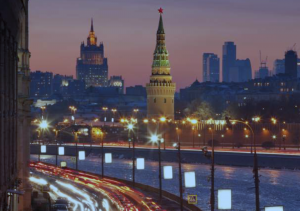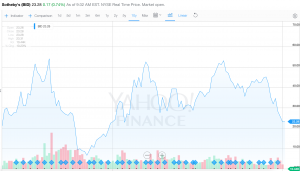Art Market cools in 2016
Jan 29th, 2016 | By Ivan Lindsay | Category: JournalThe art market is entering one its cyclical periods of adjustment. As we shake off the lethargy of the Christmas holiday period and start to re-engage with the workplace the world feels a less certain place. Dangers seem to lurk around every corner including a slowing China, a recovery in the USA that is already 2 years longer than the post recession average, an increasingly belligerent situation in the middle East developing between Iran and Saudi Arabia (and their respective allies), wars in Ukraine, Syria and Libya, collapsing commodity prices including oil, copper and coal, struggling emerging markets and a strong dollar.
The World Economic Forum in Davis took place from the 20th – 23rd January. The world’s movers and shakers love getting together to strut around Davos and sound-off on what they see unfolding in the year ahead. This year it was clear that they were as clueless as ever as they competed to produce the best soundbites to tweet around the world. Professor Klaus Schwab, the Founder and Chairman of this annual circus solemnly pronounced, “There has never been a time of greater promise, or greater peril.” Couldn’t that be said with equal validity at any moment in time? Justin Trudeau and Joe Biden worried about the Fourth Industrial Revolution(whatever that might be) and Angela Kane warned that, “we are on the cusp of a new era of conflict.” As head of the Vienna Center for Disarmament and Non-Proliferation she went on “The monopoly of the conduct of war could soon be taken out of the hands of humans.” Was she thinking Planet of the Apes or Robots taking over? Christine Lagarde of the IMF talked of “The Internet of Woman” and Sheryl Sandberg said we face a “toddler age gap.” Salesforce CEO Marc Benioff seemed closer to the mark with, “As a society, we are entering uncharted territory” but perhaps the last word should go to the musician will.i.am who advised, “Lets put our optimism goggles on.” Presumably this means lets remain optimistic, despite whatever decisions the world’s leaders make, and I cannot argue with that.
The art market is seeing this uncertainty manifest itself in a slowing of demand. After five years of growth Christie’s reported a 5% decline in Global sales in 2015 to US$7.4bn and Sotheby’s posted a 2015 fourth quarter loss of US$12 – 19m. Collectors are seeking safety and chasing an increasingly small group of blue-chip artists whose stellar prices provide the illusion that all is well. The middle market, like the stock market when you strip away the Apple’s and Google’s, is like a balloon with a small leak, i.e. slowly deflating. In fact deflation is an issue in all markets. Despite central banks best efforts to introduce some inflation, with massive amounts of money printing, the world economy continues to deflate with interest rates now negative in various parts of the world including, as of this week, Japan.
The art markets of emerging markets have been hit particularly hard. At the recent South American Sales Week in New York, Brazilian buyers, a mainstay of this market these last ten years had all but disappeared. And at the November London Russian Art Week, sales collapsed from pounds 105m in 2014 to pounds 43m in 2015 with the average price per lot falling by half from pounds 36,700 to pounds 18,600.
The Russian art market is being buffeted from all sides: – weak oil price, sliding rouble, international sanctions, recession and wars in Ukraine and Syria. Global Counsel, the strategic advisory business run by Lord Mandelson, recently published an extensive report entitled ‘Multinationals in Russia in 2015 in their own words’ which examines what 46 major foreign investors have published about Russia in their own financial reports. http://www.global-counsel.co.uk/publications/multinationals-russia-2015-their-own-words
The report says, “The overwhelming majority of firms have a bleak assessment of Russia, due to both structural and cyclical factors, with six times as many viewing the market negatively than those that view it positively. Even so, we find that twice as many firms are committed to the Russian market and expanding their presence there as those that are reducing it, although there is an even larger group of companies that are either standing still or not reporting changes…..Many firms are still reassessing their Russia strategy and we conclude this is a critical moment for foreign companies in Russia. We do not yet know whether the commitment being shown to the Russian market in the face of widespread pessimism about market conditions will be sustained. Some of Russia’s problems are undoubtedly structural, with growth slowing in the years running up to 2014. Much will undoubtedly depend on whether the factors that have caused the market outlook to deteriorate so rapidly in 2014 – sanctions, oil prices, and some aspects of policy – are temporary. If they are not then we expect that more firms will begin to reduce their exposure in Russia in the months ahead. ” This anxiety, coupled with a reluctance to pull out of such a potentially important market, is reflected in the auction rooms ongoing attitude of commitment towards the Russian art market.
International art markets are also feeling weaker as is reflected in the sliding share price of Sotheby’s, the art world’s only listed businesses.The share price has halved to US$23.28 providing a sizable loss for the speculator Dan Loeb who now occupies a seat on the board derived from his substantial shareholding in the company. Traditionally Sotheby’s is an early warning stock for the rest of the economy and the general stock market that, if the pattern continues, means that in 2016 or 2017 we should see a sizable move downwards in the world economy that will further depress that art market.
Sotheby’s announced recently it is buying the boutique Contemporary Art Advisory company, Art Agency Partners which was run by the lawyer Adam Chinn and art advisors Amy Cappellazzo and Allan Schwartzman. The price reported by the New York Times was US$50m with a further US$35m if various targets were met. Most acquisitions of dealers/galleries and advisors turn out to be mistakes for the auction rooms and this will probably be no different. It seems odd that Sotheby’s did not have the expertise in-house to form this advisory division and had to go out and buy it. The acquisition smacks of a lack of self-confidence.
The art world is also reeling from a slew of bad publicity provided by leading economists, such as Nouriel Roubini, who are claiming it is a conduit for money laundering and capital flight, and from a series of high profile court cases including Gagosian v Qataris (over who really bought the Picasso Sculpture of his mistress Marie-Therese Walter), Knoedler Gallery (selling fakes) and Rybolovlev v Bouvier (trouble over commissions).
The bad publicity surrounding the art world will blow over in time. It is unlikely the art market is sizable enough to warrant regulating further and there is little political interest in it as the public little cares that rich people are having difficulties doing business with each other. And, as in all dislocations, there will be plenty of opportunities to buy good paintings in the up-coming period for the few who are brave enough to buy when others are panicking. We have been in a seller’s market for a while now… but that is about to change.


